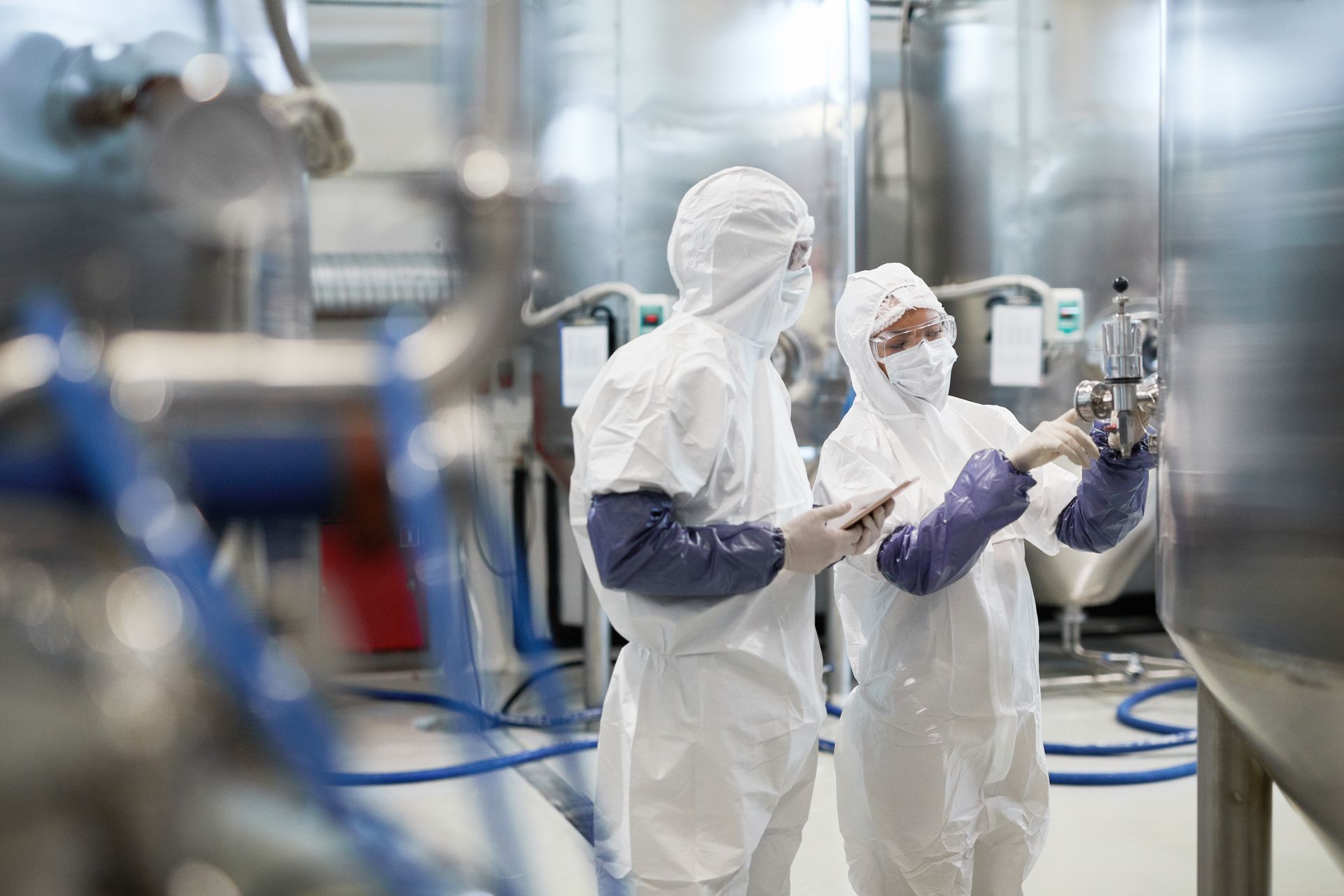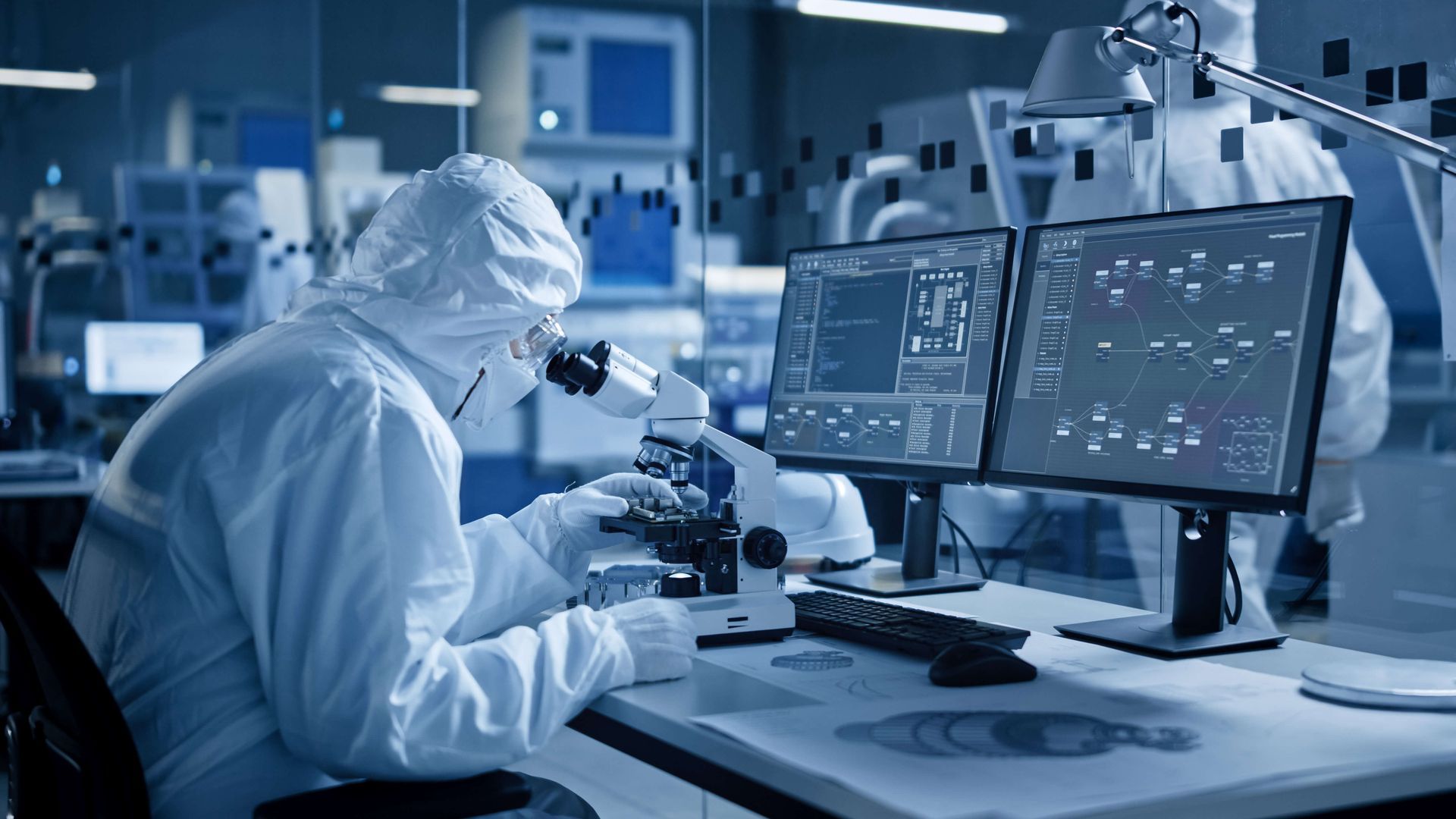Your Cleanroom Specialist
Competence from + 100 Cleanrooms and since 1992
Cleanroom 14644 ISO 1-9 FS209E EU GMP ABCD USP 797, 800, 825
Cleanroom Design, Construction, Operation
Limit Your Liability
Cleanroom End User
Limit Your Liability - I make sure that Your Cleanroom project meets Your demands, from Design to Operation.
Architects
Limit Your Liability- I make sure that Your Cleanroom Specification will meet the End Customer needs, and at the right budget/cost.
Contractors
Limit Your Liability- I make sure that all building processes are aligned, in line with the Cleanroom demand.
Consulting Engineers
Limit Your Liability- I offer extended Cleanroom competence
Alata
Alice
Open Sans
Noto Sans
Bebas Neue
Great Vibes
Rock Salt
Exo
Belgrano
Overlock
Cinzel
Indie Flower
Staatliches
Roboto Slab
Lato
Noto Serif
Open Sans
Montserrat
Ubuntu
Rubik
Delius
Amiri
Montserrat

Handling Chemicals and Gases in Cleanrooms 1 Introduction Handling chemicals and gases in cleanrooms demands strict adherence to engineered controls, documented procedures, and validated safety mechanisms. Cleanrooms regularly use corrosive, flammable, pyrophoric, toxic, or high-purity chemicals and gases to support semiconductor fabrication, pharmaceutical manufacturing, biotechnology processes, and advanced materials production. These substances introduce contamination, safety, and compatibility risks that must be managed through facility design, environmental controls, and operator discipline. This article outlines the engineering principles and operational requirements that ensure safe, compliant handling of chemicals and gases in controlled environments. 2 Chemical and Gas Hazards in Cleanrooms Cleanroom processes involve diverse hazard classes: Corrosives (e.g., acids, bases) that can damage materials and equipment. Flammables and combustibles requiring ignition control and ventilation. Toxics and sensitizers that demand containment and exposure monitoring. Pyrophoric gases that ignite on contact with air. High-purity process gases where even minor contamination affects product performance. Volatile compounds that risk particle generation or chemical interactions. These hazards require coordinated engineering controls—airflow design, exhaust systems, containment, leak detection, material compatibility—to protect both personnel and product integrity. 3 Engineering Controls for Safe Chemical Handling Effective chemical handling begins with engineered systems that prevent contamination and exposure. Local Exhaust Ventilation (LEV): Fume hoods, wet benches, and chemical process tools maintain negative pressure and high capture velocity to contain fumes and aerosols. Exhaust systems must include corrosion-resistant ductwork, filters, and appropriate scrubbers. Chemical-Resistant Surfaces and Tools: Benchtops, tanks, piping, and fittings must be constructed from chemically compatible materials (e.g., PVDF, PTFE, stainless steel) to avoid corrosion, particle shedding, or chemical interactions. Secondary Containment: Trays, cabinets, and bunding prevent spills from spreading into cleanroom circulation zones. Ventilation and Pressure Control: ISO 14644 cleanrooms depend on stable airflow and differential pressure regimes. Areas where chemicals are opened or transferred typically operate under slight negative pressure relative to adjacent clean zones to limit contamination and personnel exposure. 4 Chemical Storage Requirements Proper storage reduces contamination, fire, and compatibility risks. Segregate incompatible chemicals (oxidizers, flammables, acids, bases, reactive chemicals). Use certified safety cabinets for flammables and corrosives, with appropriate ventilation when needed. Implement FIFO (first-in, first-out) inventory control to minimize expired materials. Maintain clear labeling with lot numbers, hazard classifications, and expiration dates. Store bulk chemicals outside the cleanroom when feasible, transferring only required volumes into controlled areas. Storage strategies must be documented, validated, and routinely audited. 5 Chemical Transfer and Dispensing Procedures Transferring chemicals is one of the highest-risk cleanroom operations. Best practices include: Closed transfer systems such as quick-connect fittings, sealed dispensing systems, or pump transfer units. Grounding and bonding when handling flammable liquids to prevent static ignition. Controlled point-of-use delivery , ensuring chemicals are dispensed only in properly ventilated, validated equipment. Drip trays and secondary containment for all dispensing stations. Immediate wipe-down protocols for spills or splashes using compatible materials. Operators must be specifically trained on the procedures and hazards relevant to each chemical class. 6 Gas Handling and Distribution Systems Process gases introduce unique technical challenges requiring specialized system design. Gas Cabinets and Enclosures: Hazardous gases must be stored in ventilated gas cabinets equipped with automatic shutoff valves, fire detection, and leak monitoring systems. Gas Lines and Manifolds: Material selection (stainless steel, electropolished tubing, VCR fittings) ensures purity and prevents particle generation. Connections must follow semiconductor-grade or GMP-appropriate specifications. Leak Detection and Monitoring: Toxic, corrosive, and pyrophoric gases require fixed gas detection systems with alarms, interlocks, and automated isolation valves. Calibration and functional testing must follow documented schedules. Pressure Regulation and Purging: Systems must include pressure regulators, purge lines, and automated sequences ensuring safe startup, shutdown, and cylinder changes. 7 Contamination Control Considerations Chemicals and gases can be sources of both chemical and particulate contamination. Control measures include: Using high-purity reagents certified for cleanroom applications. Implementing filtered dispensing systems to remove particles. Maintaining closed pipelines for process gases to avoid ambient exposure. Ensuring proper airflow direction to prevent chemical emissions from reaching sensitive production areas. Validating cleaning protocols for tools and containers handling chemicals. These measures preserve product quality and maintain the cleanroom’s ISO classification. 8 Personal Protective Equipment (PPE) and Gowning Chemical handling requires enhanced PPE beyond standard cleanroom garments. Depending on the hazard, PPE may include: Chemical-resistant gloves, often double-gloved. Face shields or splash goggles. Chemical-resistant aprons or smocks worn over cleanroom gowns. Respiratory protection where engineering controls alone are insufficient. Antistatic footwear for flammable chemical handling. Gowning protocols must define required PPE by task and substance, supported by documented training and periodic competency assessments. 9 Emergency Procedures and Spill Response Cleanrooms must maintain comprehensive, rehearsed emergency procedures aligned with the chemicals and gases in use. Spill kits must be compatible with each chemical class and accessible without obstructing cleanroom flow. Emergency shutoff switches , interlocks, and isolation valves must be clearly marked and tested. Evacuation procedures must reflect the hazard characteristics of specific gases or chemicals. Incident documentation must capture cause, response actions, and corrective measures. Post-incident clearance requires environmental monitoring to ensure the cleanroom returns to safe operation. All emergency procedures must be controlled documents subject to periodic review. 10 Waste Management and Disposal Chemical waste streams require segregation, containment, and compliant disposal: Use closed, labeled waste containers made of compatible materials. Maintain segregated waste pathways for corrosives, organics, and reactive chemicals. Ensure ventilated waste accumulation areas outside critical zones. Document waste transfers with signatures and collection logs. Validate all waste handling procedures according to environmental and safety regulations. Improper waste handling can compromise both cleanroom safety and contamination control. 11 Documentation, Training, and Compliance Requirements Handling chemicals and gases must be supported by a robust document-control framework: SOPs covering storage, transfer, dispensing, PPE, spill response, and waste disposal. Equipment specifications and maintenance records for hoods, cabinets, sensors, and gas lines. Training records linking personnel competence to specific procedures and hazards. Change-control documentation for chemical substitutions, equipment upgrades, or procedural modifications. Routine audits verifying adherence to procedures and system performance. Documentation must remain current, traceable, and aligned with ISO 14644, GMP expectations, and applicable safety standards. 12 Best Practices for Safe and Compliant Operations Clean, safe chemical and gas handling integrates engineering design with disciplined operations. Key best practices include: Maintain strict segregation of incompatible chemicals. Use validated containment systems for all dispensing and gas delivery operations. Ensure regular calibration and testing of detection, ventilation, and control systems. Train personnel thoroughly and maintain documented competency assessments. Apply preventive maintenance to all chemical-handling equipment. Conduct routine hazard assessments to evaluate evolving process risks. Align all procedures with a robust document control system. 13 Conclusion Handling chemicals and gases in cleanrooms combines contamination control, engineering discipline, and operator safety. By integrating reliable ventilation, validated containment systems, rigorous documentation, and comprehensive training, cleanroom facilities can safely manage hazardous substances without compromising product quality or regulatory compliance. In demanding environments where chemical purity and operator protection are equally critical, a structured and technically sound approach ensures stable, predictable, and safe cleanroom operations. Read more here : About Cleanrooms: The ultimate Guide

The Importance of Document Control in Cleanrooms 1 Introduction Document control is a foundational requirement in cleanroom operations, ensuring that all procedures, specifications, monitoring activities, and quality records remain accurate, current, and traceable. Whether aligned with ISO 14644, EU GMP, or FDA cGMP expectations, cleanrooms depend on disciplined documentation to maintain consistency, demonstrate regulatory compliance, and minimize contamination risk. Even cleanrooms built with robust engineering controls can fail audits if documentation is incomplete, outdated, or poorly managed. 2 Why Document Control Matters in Controlled Environments Cleanrooms function within strict environmental and procedural limits. Parameters such as differential pressures, air change rates, gowning protocols, cleaning frequencies, and equipment calibration must be executed exactly as defined. Document control ensures these expectations are clearly captured, controlled, and accessible. In multidisciplinary cleanroom environments, documentation harmonizes operator behavior, engineering intent, and quality oversight. It provides traceability—linking each action to who performed it, when it occurred, and under what conditions—supporting both operational consistency and regulatory defensibility. 3 Core Objectives of Cleanroom Document Control A compliant document management framework accomplishes several essential goals: Accuracy and consistency across procedures and records. Traceability and accountability for all regulated activities. Regulatory compliance with ISO 14644, GMP, and internal QA standards. Change management to ensure that any modification is reviewed and approved. Reduction of human error by standardizing instructions and expectations. 4 Types of Documents Required in Cleanroom Operations Cleanroom document control systems must systematically manage a broad range of document types: Policies: High-level quality and contamination-control commitments Standard Operating Procedures (SOPs): Step-by-step directions for gowning, cleaning, monitoring, material flow, and related tasks Work Instructions: Equipment- or task-specific instructions supporting SOPs Specifications: Defined performance and quality requirements for systems, materials, and equipment. Batch Records and Logbooks: Real-time operations data confirming processes were executed as designed. Drawings and Schematics: Controlled engineering documents that must remain aligned with as-built conditions. Validation Protocols and Reports: IQ/OQ/PQ documents confirming system performance. Change Control Records: Documentation of proposed modifications and risk evaluations. All categories must follow controlled creation, approval, issuance, revision, use, and archiving processes. 5 ISO 14644 and GMP Expectations for Document Control ISO 14644 requires documented procedures for contamination control, environmental monitoring, and cleanroom maintenance, while GMP frameworks emphasize traceability, data integrity, and lifecycle record retention. Shared expectations include: Controlled and approved procedures for all critical cleanroom operations. Version control and revision tracking to prevent use of outdated documents. Defined retention periods aligned with product and regulatory requirements. Master documents reviewed and approved by qualified personnel. Immediate retrieval capability during audits or investigations. GMP data integrity principles (ALCOA+)—Attributable, Legible, Contemporaneous, Original, Accurate, plus Complete, Consistent, Enduring, Available—define the quality requirements for all documentation. 6 Preventing Common Failures in Document Control Typical weaknesses in cleanroom documentation include uncontrolled copies, missing signatures, outdated SOPs, incomplete logbooks, and undocumented changes. These issues create significant audit risk and undermine process consistency. Effective systems maintain: Single-source access via controlled binders or electronic document management systems. Immediate removal of obsolete versions from production and monitoring areas. Routine internal audits verifying correct use and completion of records. Clear authorship, review, and approval responsibilities. Training tied to revised documents to prevent procedural drift. 7 The Role of Change Control in Contamination Risk Management Any modification affecting cleanroom operation—HVAC settings, equipment, cleaning agents, material flow, gowning procedures, or sampling methods—must follow a formal change-control process. Effective change documentation includes: Detailed description of the proposed change. Impact assessment on validated conditions, cleanliness classification, and operational risk. Determination of requalification or revalidation needs. Update requirements for SOPs, drawings, and training materials. Defined responsibilities, timelines, and approval steps. Change control protects the validated state of the cleanroom and prevents unnoticed deviations. 8 Document Control in Environmental Monitoring Programs Environmental monitoring depends on consistent, fully documented processes. Document control ensures: Sampling locations and frequencies match risk assessments and ISO classifications. Operators follow current methods for particle counting, active air sampling, and surface sampling. Deviations or out-of-specification results trigger documented investigations. Monitoring instruments maintain complete calibration and maintenance records. Monitoring documents often serve as key evidence in inspections; therefore, accuracy and completeness are critical. 9 Document Control for Cleaning and Disinfection Programs Cleaning activities must occur precisely as documented since they directly influence contamination risk. A compliant document control system: Maintains controlled SOPs for every cleanroom zone and cleaning method. Ensures cleaning logs capture dates, times, operator identification, and disinfectant details. Manages revisions related to disinfectant rotation, application methods, or scheduling. Preserves archived records to support contamination investigations and regulatory audits. 10 Integrating Training with Document Control Personnel competency is inseparable from documentation accuracy. Strong systems integrate: Training matrices linked to document numbers and revision levels. Competency assessments verifying operator understanding of changes. Mandatory retraining upon document revision for relevant personnel. Controlled storage of training records within the document management framework. Misalignment between training and documentation is a leading cause of procedural errors; integration prevents such gaps. 11 Digital vs. Paper-Based Document Control Both paper and electronic systems can comply with ISO and GMP requirements if managed appropriately. Paper-Based Systems: Require tight control of master copies and distribution. Are vulnerable to damage, illegibility, and uncontrolled duplication. Suit smaller facilities with simpler document needs. Electronic Systems (EDMS/QMS): Provide automated version control and full audit trails. Reduce the risk of outdated documents in circulation. Require validated software, secure access controls, and backup processes. Many modern cleanroom operations favor electronic systems for scalability and audit readiness. 12 Best Practices for a Compliant Document Control Program High-performing cleanroom document-control frameworks incorporate: Standardized formatting and document numbering. Defined review intervals to keep documents current. Robust version control and immediate withdrawal of obsolete documents. Controlled distribution lists and access management. Training requirements linked to each revision. Audit-ready archiving practices and compliant retention schedules. 13 Conclusion Document control is more than an administrative requirement—it is a core engineering and quality function that supports the repeatability, defensibility, and regulatory integrity of cleanroom operations. A disciplined document management system ensures that every activity is performed under controlled, current, and traceable instructions. By maintaining accurate procedures, rigorous change control, and fully documented evidence of compliance, cleanroom operators strengthen contamination control, support consistent performance, and uphold the standards required for safe, high-quality production. Read more here: About Cleanrooms: The ultimate guide

This is the 3rd Article I have been asked to write for the UK based Cleanroom Technology - You find it here: A comprehensive guide to cost management in cleanrooms and below. Introduction Cleanrooms are environments where the level of environmental pollutants, such as dust, airborne microbes, aerosol particles, and chemical vapours, is strictly controlled. These controlled environments are vital in industries such as pharmaceuticals, biotechnology, electronics manufacturing, aerospace, and medical device production, where the highest standards of cleanliness are required for the safety and efficacy of products and processes. While cleanrooms are essential for these sectors, their operation is costly, and managing that cost is crucial to ensuring that organisations can maintain compliance with industry standards while optimising their operational expenses. Effective cost management in cleanrooms involves balancing the costs associated with maintaining the facility’s cleanliness and safety standards with the necessity to remain competitive and profitable. From the initial investment in cleanroom infrastructure to ongoing maintenance and energy expenses, there are many areas where cost management plays a pivotal role in ensuring operational efficiency without compromising the quality of the controlled environment. This article dives deep into the critical aspects of cost management in cleanrooms, providing a detailed look at the factors contributing to costs, methods for managing these costs effectively, and strategies for maintaining a cost-efficient cleanroom without sacrificing performance or regulatory compliance. Key factors influencing cleanroom costs Understanding the primary cost drivers within a cleanroom is essential for any cost management strategy. These factors include: 1 - Design and construction costs: The design and construction of a cleanroom are among the most significant expenses. These costs include: Materials and equipment: Cleanrooms require high-quality materials for walls, flooring, ceilings, and HVAC systems to prevent contamination. Specialised air filtration systems, controlled humidity systems, and temperature controls also contribute to construction costs. Compliance with regulations: Cleanrooms must adhere to strict regulatory standards, such as ISO 14644, FDA Good Manufacturing Practice (GMP), and other industry-specific guidelines. Designing a cleanroom that meets these standards requires an investment in expert engineering and design services. 2 - HVAC Systems and filtration: The heating, ventilation, and air conditioning (HVAC) system is one of the most important components in maintaining the cleanliness of the room. The HVAC system needs to: Provide continuous airflow: To maintain positive pressure and avoid contamination from the outside environment. Ensure proper filtration: The system must include HEPA (High-Efficiency Particulate Air) filters, ULPA (Ultra-Low Penetration Air) filters, or other advanced filtration systems to ensure the air meets cleanliness standards. Energy consumption: HVAC systems consume a substantial amount of energy, contributing significantly to operational costs. Efficiency in HVAC design can help reduce these costs. 3 - Energy costs: Cleanrooms often require high levels of energy to maintain the necessary temperature, humidity, and airflow. Factors that affect energy costs include: Airflow and pressure requirements: Cleanrooms typically require more airflow than other types of rooms due to the need to filter out contaminants continuously. Lighting and equipment usage: Cleanrooms are usually equipped with specialised lighting and equipment, which can add to the energy burden. HVAC system running costs: Cleanroom HVAC systems run continuously, sometimes 24/7, and their high energy consumption can become a significant part of the operating cost. The ongoing costs of certification, auditing, and compliance with standards require specialised staff 4 - Labour costs: Maintenance personnel: Cleanroom facilities often require specialised maintenance personnel to handle the HVAC system, filtration systems, and other critical components. Regular cleaning, monitoring of air quality, and ensuring that the systems are functioning as expected is essential to maintaining the cleanroom environment. Compliance and certification personnel: The ongoing costs of certification, auditing, and compliance with standards require specialised staff to manage documentation, inspections, and validation processes. Training and staffing: Personnel working in cleanrooms, especially in highly regulated industries, often require ongoing training to ensure that they comply with the standards. This training adds to the overall costs. 5 - Consumables and maintenance: Cleaning supplies: Maintaining a cleanroom requires specialised cleaning agents and materials that comply with cleanliness standards. These supplies can become expensive depending on the scale and type of cleanroom. Filter replacement: Air filters in HVAC systems need to be replaced regularly to ensure the cleanroom maintains the required air quality levels. These filters, especially HEPA and ULPA filters, are expensive and need regular monitoring. Replacement of equipment: Over time, equipment and infrastructure in the cleanroom may degrade, requiring replacement parts or entire systems to ensure proper functionality. 6 - Regulatory compliance and documentation costs: Adhering to regulatory requirements (e.g., ISO 14644, GMP) involves regular inspections, certifications, and audits. The costs of maintaining certifications, purchasing updated documents, and maintaining records for compliance purposes can add to the cost of operating the cleanroom. Methods for managing cleanroom costs To effectively manage costs in a cleanroom environment, businesses must adopt a comprehensive strategy that focuses on both reducing expenses and improving operational efficiency. Below are some of the methods to manage cleanroom costs effectively. 1 - Designing efficient cleanroom systems: A key to controlling costs starts with the design of the cleanroom itself. An efficient cleanroom design that minimises energy consumption and operating costs while meeting regulatory requirements is essential. Optimised HVAC systems: Using energy-efficient HVAC systems can help reduce ongoing energy costs. Variable frequency drives (VFDs) and air handling units that adjust based on real-time conditions can help lower energy consumption. Modular cleanroom design: Modular cleanrooms that can be reconfigured as needed allow businesses to scale their operations without the need for constant, expensive construction. Energy-efficient lighting: LED lighting, occupancy sensors, and other energy-saving lighting options can reduce electricity consumption in cleanrooms. 2 - Regular maintenance and preventive maintenance: Regular maintenance is critical in extending the lifespan of the HVAC system, filtration units, and other cleanroom components, thus reducing the need for costly replacements. Preventive maintenance schedules should be established to: Replace filters on time to maintain air quality and prevent system failure. Regularly inspect and clean HVAC systems to ensure they are operating efficiently. Perform routine inspections of critical systems to prevent unexpected breakdowns and the associated high costs. 3 - Energy Management Systems (EMS): Investing in EMS can help track and reduce the energy consumption of cleanrooms. These systems provide real-time monitoring of energy usage, alerting operators to inefficiencies and enabling more effective energy use. Control Systems: By optimising temperature, humidity, and airflow based on real-time needs, EMS can help reduce unnecessary energy use. Demand-response programmes: Some energy providers offer demand-response programmes where facilities are incentivised to reduce energy consumption during peak times. Implementing these strategies can further reduce energy expenses. 4 - Optimising filtration and air quality management: Efficient filtration systems: Upgrading to more efficient filtration systems can sometimes reduce long-term costs by extending the life of filters, improving air quality, and reducing maintenance needs. ContaminationcControl: By implementing better contamination control measures, such as gowning protocols and regular particle monitoring, businesses can reduce the frequency of major cleanroom interventions. 5 - Cost-effective staffing and training: Cross-training personnel: Cross-training employees to handle different tasks can help reduce labour costs and make cleanroom operations more flexible and cost-efficient. Outsourcing and automation: For certain tasks, such as routine cleaning or testing, outsourcing or automation might be a more cost-effective solution, reducing the need for in-house labour. 6 - Adopt lean practices: Lean principles in cleanroom operations aim to eliminate waste and improve efficiency. This can be applied by: Reducing unnecessary processes that do not contribute directly to cleanroom performance. Improving workflows to reduce downtime and the need for redundant processes. Streamlining maintenance and equipment replacement schedules to avoid excess spending. Conclusion Cost management in cleanrooms is a multifaceted challenge that requires careful planning and strategic decision-making. From the design and construction phase to ongoing maintenance and energy consumption, there are numerous factors influencing the overall costs of cleanroom operations. However, with the right strategies, organisations can manage these costs effectively while still maintaining the high standards of cleanliness and safety required for their operations. By focusing on energy-efficient systems, regular maintenance, and optimised designs, businesses can achieve a balance between regulatory compliance, operational efficiency, and cost-effectiveness. Moreover, adopting lean management practices and leveraging technology like energy management systems can further contribute to reducing long-term costs. Ultimately, cost management in cleanrooms is not just about cutting expenses but about making intelligent investments that promote sustainability, efficiency, and compliance while fostering a productive and profitable business environment. Read more here: About Cleanrooms: The ultimate guide




